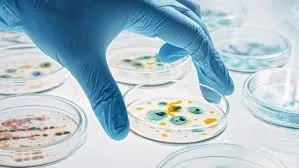Tel Aviv [Israel] – In a discovery that could revolutionize how scientists combat antibiotic resistance, researchers from Hebrew University have identified a key mechanical trigger in bacteria that enables them to share resistance genes—even in liquid environments like the bloodstream.
Led by Professors Sigal Ben-Yehuda and Ilan Rosenshine, the study uncovered that the rotation of bacteria’s tail-like structures, known as flagella, acts as a mechanical signal for DNA sharing—a process called bacterial conjugation.
It’s Not Just Movement—It’s a Message
Until now, scientists believed that gene sharing among bacteria mainly happened on solid surfaces and that flagella were only for swimming. But this new study, published in The EMBO Journal, shows otherwise.
“What we found is that in liquid, it’s the rotation of the flagella that acts as a mechanical signal to kickstart this process,” said Prof. Ben-Yehuda.
The research focused on the pLS20 plasmid found in Bacillus subtilis, a common soil bacterium. Researchers discovered that when the flagella spin, it triggers specific gene expressions that cause donor bacteria to cluster with recipient bacteria—bringing them close enough to efficiently transfer DNA.
Stop the Spin, Stop the Spread
The researchers further observed that when the flagellar rotation was blocked—either by genetic modification or by thickening the liquid—the gene-sharing process dropped significantly.
“It’s not just about having flagella,” Ben-Yehuda emphasized. “They need to rotate. That mechanical action is essential for signaling the bacteria to start sharing DNA.”
This mechanical motion, known as mechano-sensing, is a game-changing discovery because it identifies a new target for stopping antibiotic resistance: disrupt the flagella’s rotation rather than kill the bacteria directly.
Why It Matters
This finding sheds light on bacterial behavior in dynamic environments such as the lungs, bloodstream, or water systems—places previously thought to be less conducive to gene sharing.
“Synchronizing DNA transfer with the bacterial motile lifestyle gives the plasmid an edge in spreading into remote ecological niches,” explained Ben-Yehuda.
This insight could lead to smarter infection control strategies, better predictions of resistance spread, and new types of antimicrobial treatments that disable bacteria’s “communication” rather than destroy them.









